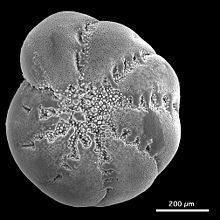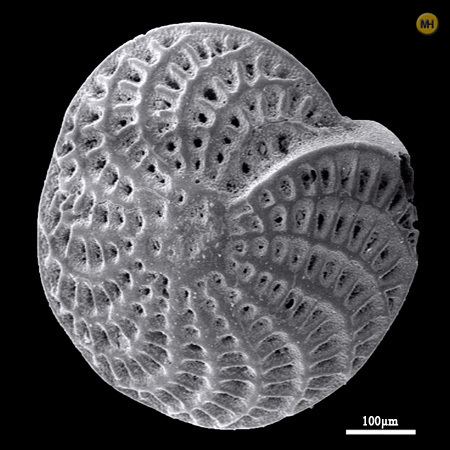Domain Eukaryota Superfamily Rotaliacea Scientific name Elphidium | Superphylum Retaria Family Elphidiidae Rank Genus | |
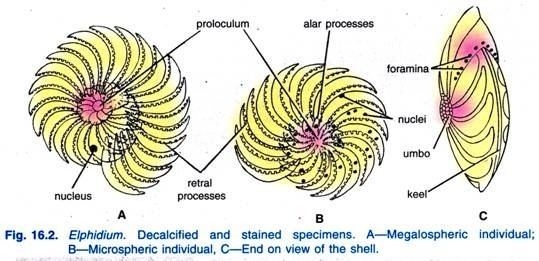 | ||
Similar Forams, Quinqueloculina, Cibicides, Bolivina, Textularia | ||
Elphidium is a genus of Foraminifera, one of the more common genera found near coasts. Like other forams, fossils from different species are used to date rocks.
Contents
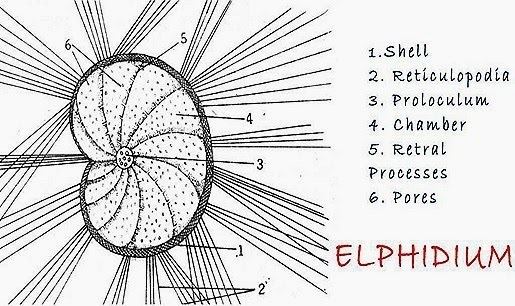
STRUCTURE AND LIFE HISTORY OF ELPHIDIUM
Description
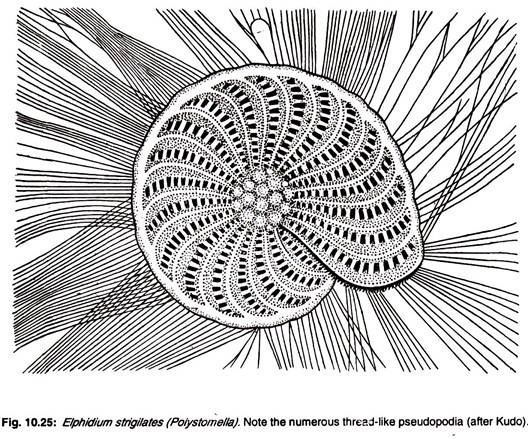
Elphidium is one of the more beautiful foraminiferans and once seen easy to recognize. The test (shell) is lenticular, composed of finely perforate, bilamellar, optically radial, or less commonly granular, calcite, planispirally enrolled. Coiling is involute or partially evolute, with seven to twenty chambers in the final whorl and may have umbilical plug on each side. In some species the rim is sharp, keel-like, in others more rounded. The most diagnostic feature, perhaps, are the retral processes (small backward extensions of the chamber walls) that cross the sutures; giving some the appearance of tiny rolled up glass baskets .
Life cycle
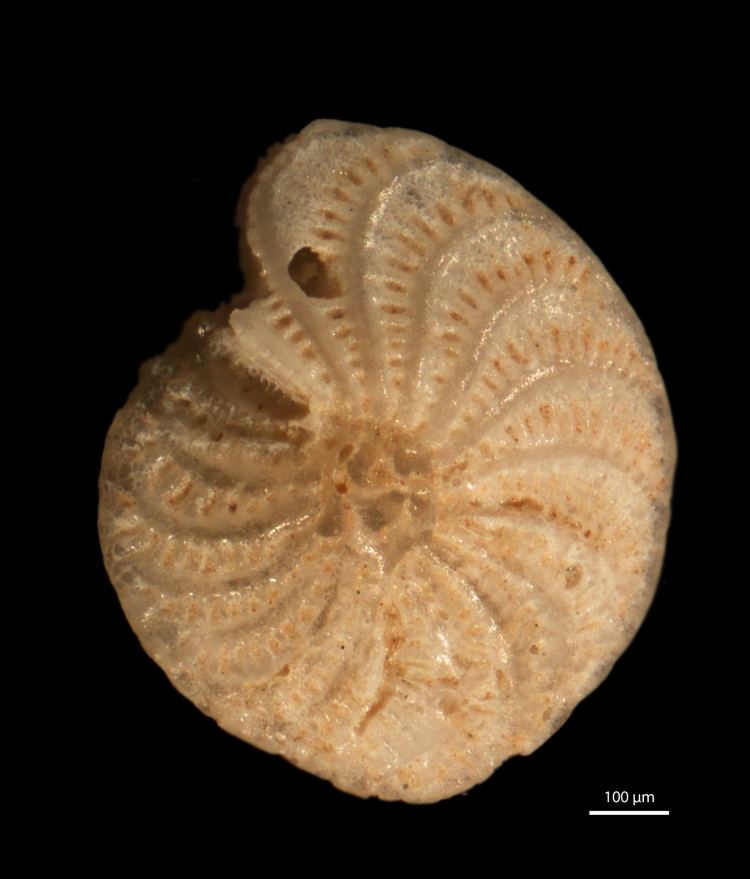
Elphidium shows dimorphism with alternating generations. The complete cycle for Elphidium crispum takes two years in the shallower marine regions, although it may be delayed at deeper stations. Asexual reproduction reaches a peak in spring of first year. Sexual reproduction begins early in the second spring as temperatures begin to rise. The gametes conjugate outside in open sea to produce zygotes and the B form then develops and matures during the second summer. Lister (1895) observed Elphidium in two different forms as megalospheric form (sexual form) and microsperic form (asexual form). The megalosperic form was developed from the microsperic form. The gametes which gives rise to microspheric form by syngamy. Elphidium exhibits an alternation of generation in its life cycle. the megalosperic forms alternates with microspheric forms. The microspheric forms are developed by the conjugation or syngamy. It means there is always an alternations of asexual (microspheric) and sexual (megalospheric) generation in Elphidium. The microspheric form reproduces asexually by fission to produce a number of amoebulae. The inner cytoplasm mass containing several nuclei creeps out of the shell and remains as a lump around it. A small amount of cytoplasm collects around each nucleus. As a result, a large number of amoeboid cells are formed. Each amoebula secretes the proloculum, formsrhizopodia, then it grows and forms other chambers of the shell to become a megalospheric forms. The megalospheric form reproduces sexually by syngamy or conjugation. During sexual reproduction in megalospheric forms, nucleus first breaks up into many small nuclie and the cytoplasm collects around each of these nuclie.The nuclie divide twice giving rice to a large haploid and known as isogametes. Isogametes of two different individuals fuse in pairs to form zygotes. These are then develops into microspheric form. The life cycle of Elphidium may be summarised as, the microspheric forms produce amoebulae by asexual fission which develops into megalospheric forms. The megalospheric forms produce flagellated isogametes which after syngamy produce zygotes that develop into microspheric forms. Thus, its life cycle clearly exhibits the phenomenon of alternations of asexual microspheric generation with sexual megalospheric generation.
